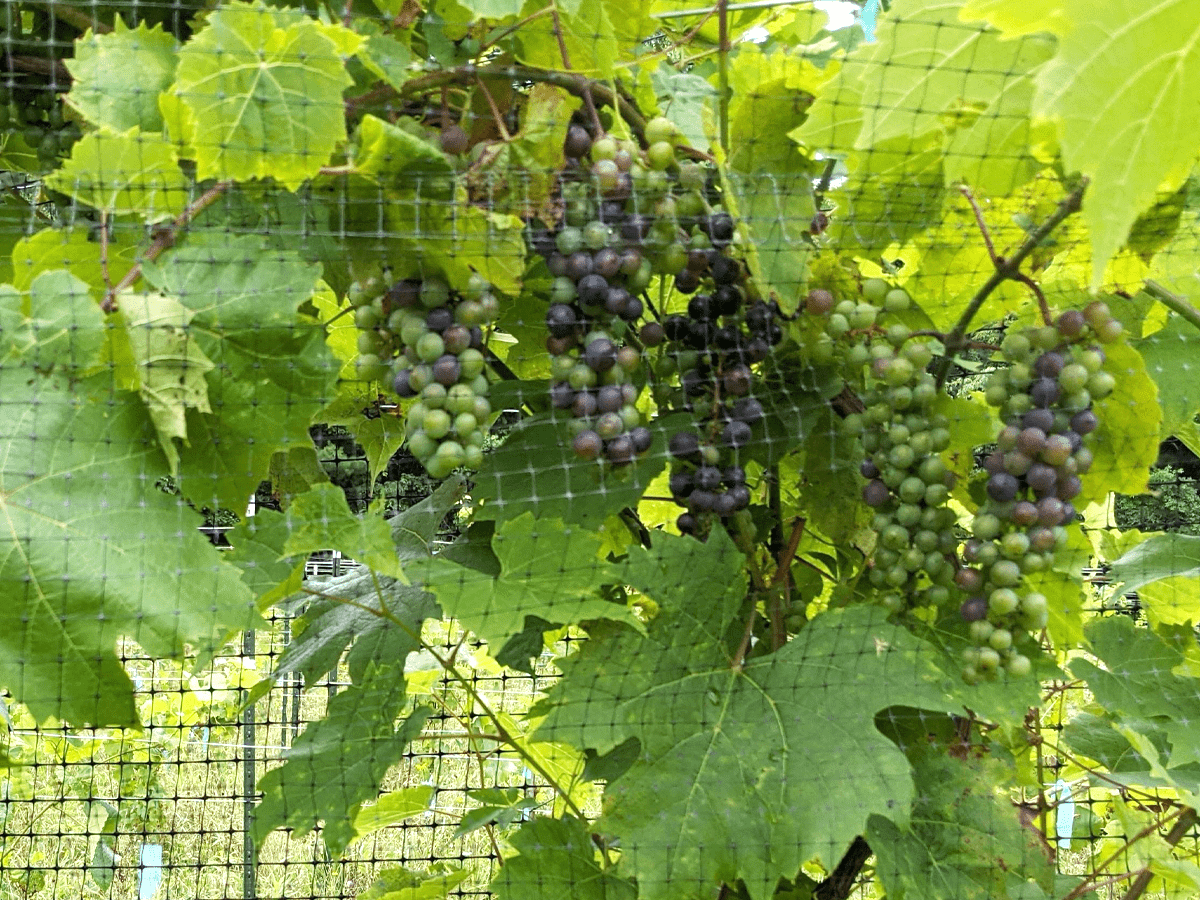In this edition on vineyards, we’ll discuss some of the pests in our vineyard. The one tenet that holds true: you are not alone in the enjoyment of grapes! From bud break to ripening, there is a pest for every season!
Young vines having few leaves and limited roots, so are more impacted by pests than established, maturing vines. In the eastern U.S., fungal diseases impact grapevines to a greater extent than in west coast vineyards. Most susceptible are the European grapevines including well known cultivars such as Cabernet Sauvignon and Chardonnay. However, the hybrids have inherited resistance to fungal diseases. This is in part due to the fact that hybridization incorporates the genes of our native vines (including Vitis labrusca, V. riparia and V. aestivalis), which have evolved with native pests. Some of the most resistant are the French and American hybrids, including lesser-known cultivars such as Oberlin noir, Vidal Blanc, Cynthiana and Cayuga White.
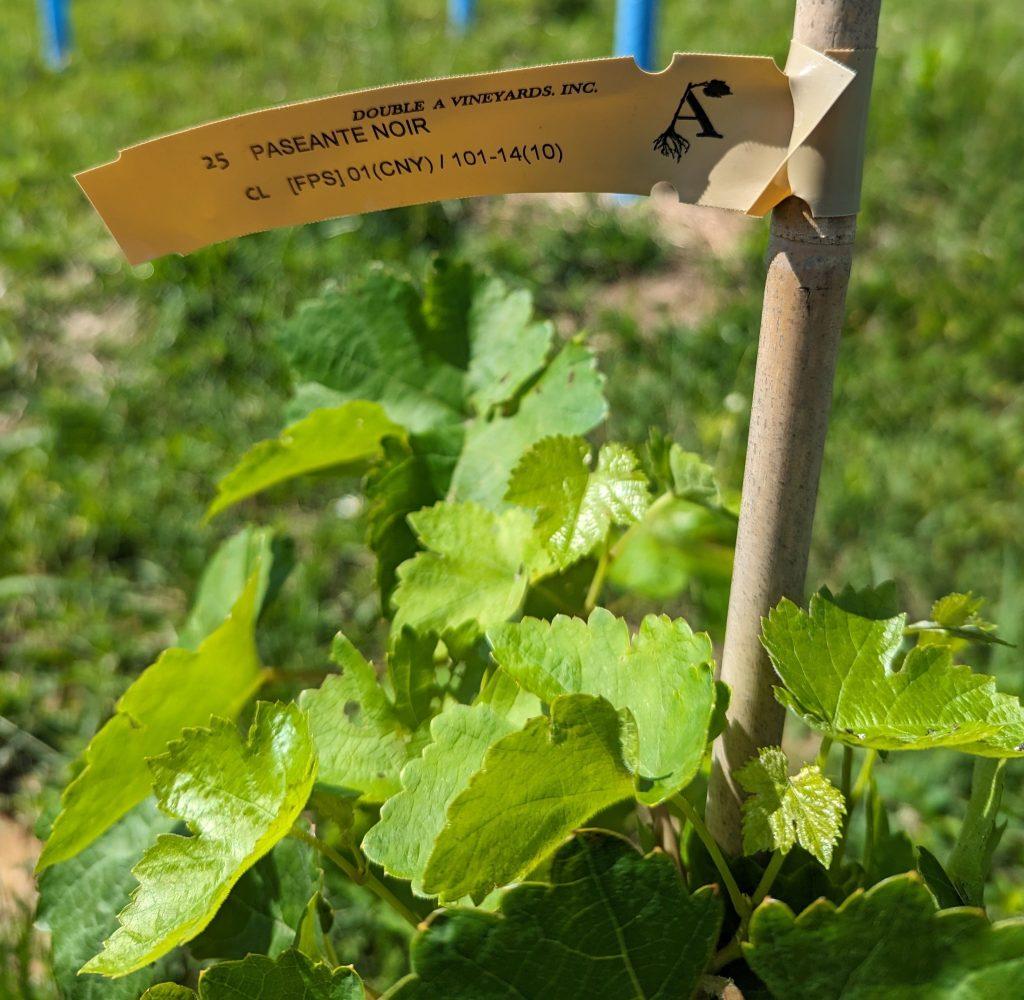
Jack Frost
From early on, the threat to grapes is neither a disease issue or a bird or mammal (these of course come later). The biggest threat is spring frost, which can occur in the mid-Atlantic region as late as Mother’s Day (around May 10th). Frost can kill new shoots, but more importantly, will kill flower buds: no flowers, no fruit! There are two things a small grower can do: select vines that break bud mid-season and later, and spur pruning. Some of the vine cultivars that are late to break bud include Vidal Blanc and Cynthiana. Long spur pruning involves cutting canes back to four rather than the usual two buds. The concept is based on bud apical dominance, that is the topmost bud develops before buds lower on the cane. If a frost kills the new shoot, the subtending buds will assume dominance and replace the lost bud.
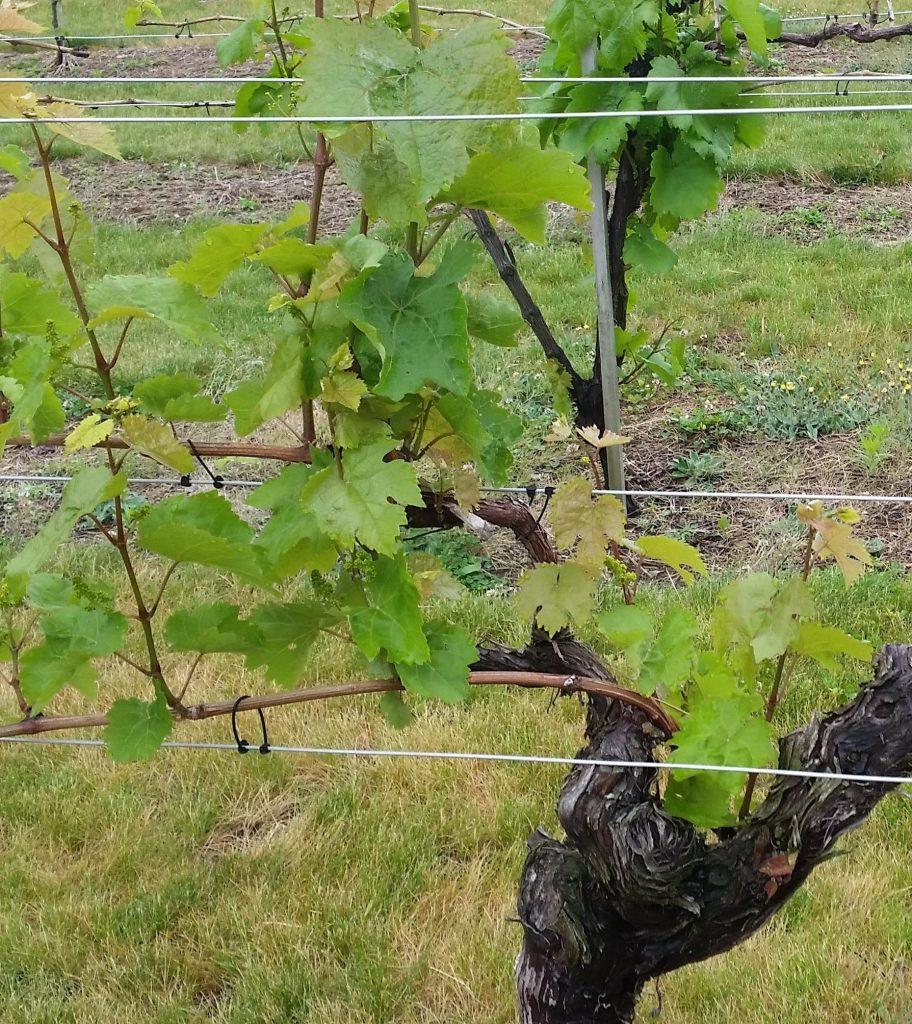
Three Buds are a Charm
What appears to be a single bud on the grapevine is actually home to three buds: a primary, secondary, and tertiary bud. The primary bud (the largest) produces leaves and one to two grape clusters. The secondary bud produces a leaf and a single cluster, while the tertiary bud, the smallest, is for vine survival and produces leaves only.
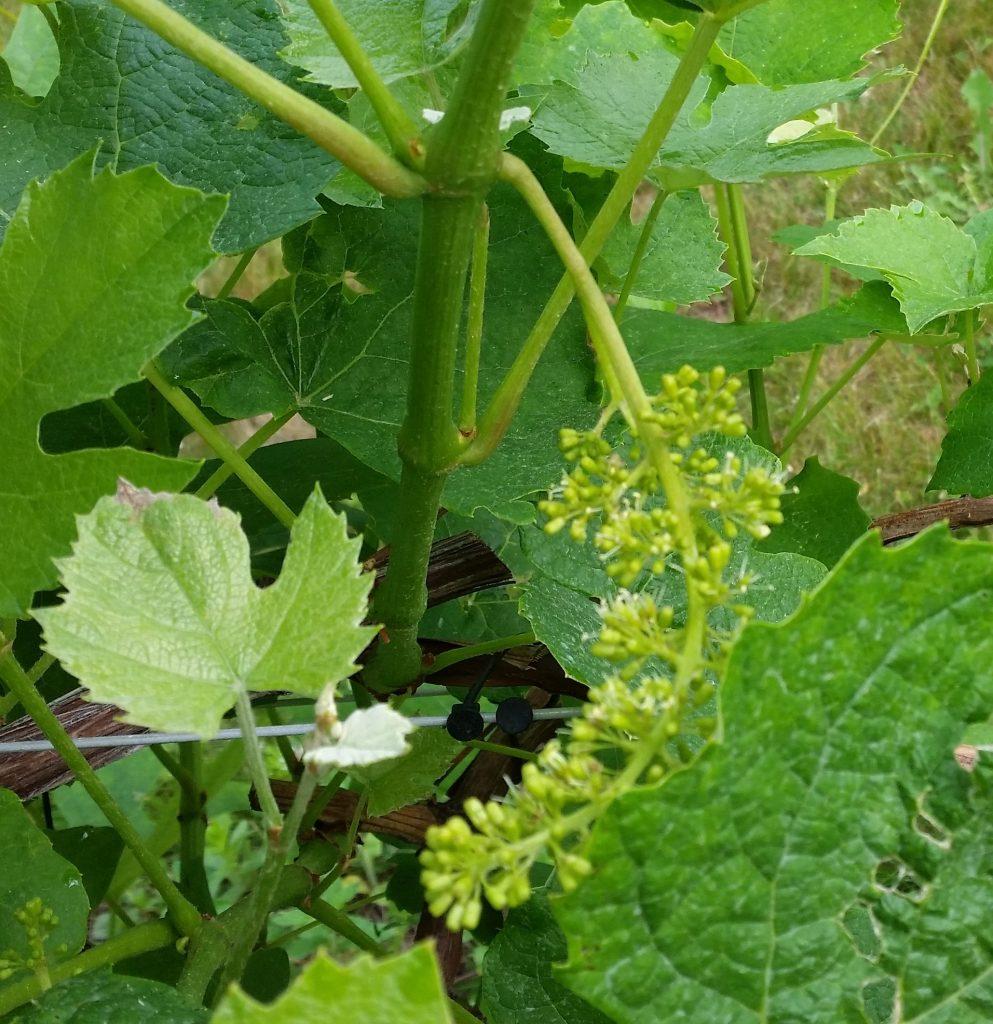
Warm, Wet Weather
Initially, following bud break and rapid growth that follows, the leaf tissue has little in the way of physical or chemical defense. Once the foliage matures it develops a waxy, hirsute, or tomentose (that is, hairy) coating. These are physical barriers to infection. Secondary metabolites (phenols and terpenes) subsequently accumulate in the leaves as they mature. These are chemical plant defenses. The young growth is susceptible to disease and to insect pests.
Many of the fungal diseases of grapevines require both moisture and certain temperatures regimen to develop. Think of the dispersed spores as germinating seeds. The spores imbibe moisture and grow hyphae. The hyphae penetrate the leaf tissue and produces a haustorium, a branched structure which develops within the plant cells. The haustoria are the site where nutrients are absorbed from the plant cell.
There are several approaches to protecting leaf tissue from such invasions. The best cultural method (aside from cultivar selection) is pruning to allow light penetration and air flow through the canopy. Both sun and wind have a drying effect on leaves and can reduce infection as a result. The other method is to apply foliar sprays to protect the vines from infection. Some of the spray applications we apply include basic copper compounds, phosphite and sulfur. Caution ought to be taken using sulfur in hot weather as it will burn the foliage of sensitive cultivars.
Sprays unfortunately need to be repeated to protect new growth. So it is a season long chore, not for the faint of heart! In general, sprays are applied every two weeks during the growing season. The most injurious fungal disease by far is black rot (Guignardia bidwellii). As its name implies, it will mummify fruits, and losses in the vineyard can be significant. Rounding out the line-up of nefarious diseases are downy mildew (Plasmopara viticola), powdery mildew (Uncinula necator) and Phomopsis cane and leaf spot (Phomopsis viticola).
Downy mildew is an oomycete, a fungal-like microorganism (a pseudo-fungus). It produces a flagellate spore that infects by swimming when the leaf is moist, invading the leaf through the stomata (the natural pores in the leaf). Phosphite applications are used as a preventative.
Powdery mildew is unusual in that it does not require free water. It develops in humid, foggy conditions. Yup, we have that here! Both copper and sulfur applications are used to control powdery mildew.
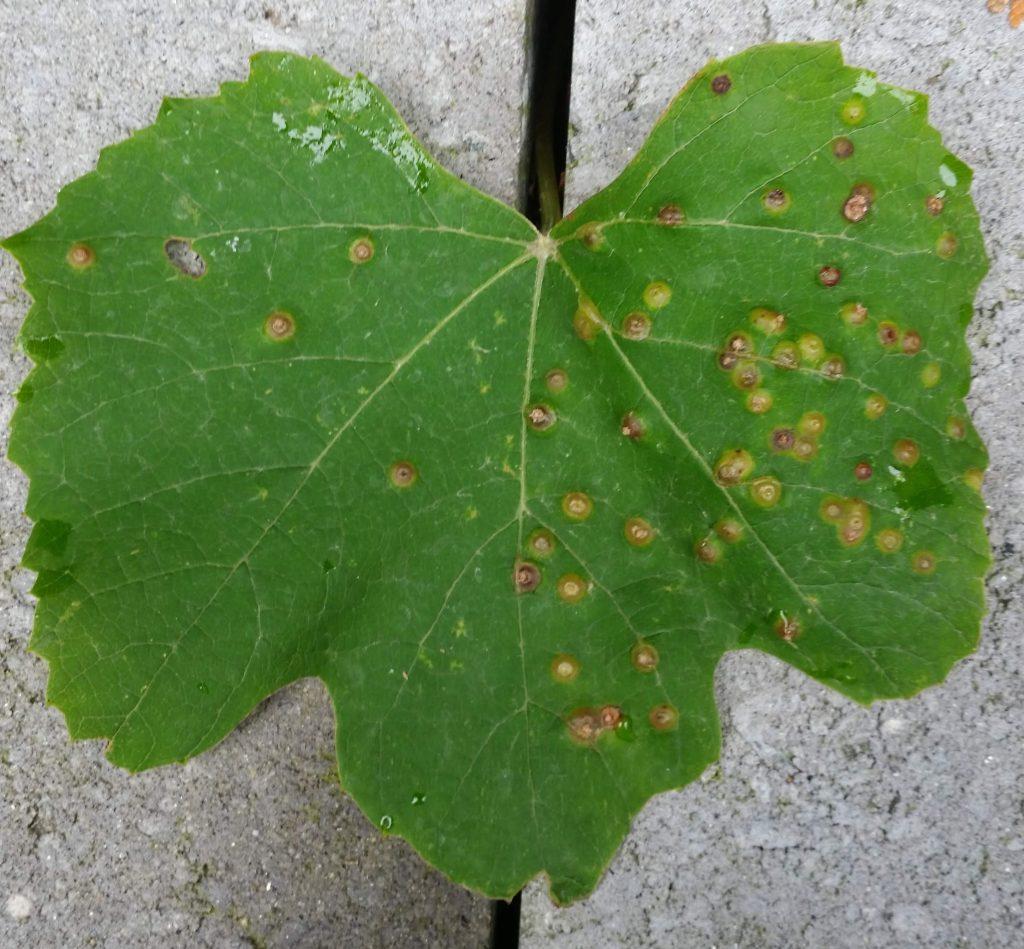
The Grapes Have Been Shot!
Shot berry is a condition where small buck-shot sized berries occur in the cluster of normally developing berries. This condition is caused by a boron deficiency in the soil. An early application of Borox (a source of boron) will help to control the physiological deficiency. This does not occur frequently in the vineyard, but we have observed it. One word of caution, boron is a micro-element that is required in small amounts (parts per million) in plants, so there is a narrow range between providing the added mineral and phytotoxicity!
Summer Stress
A physiological condition, the heat of summer (temperature and humidity play a role in heat indices), can stress vines. Applications of a kelp-based formulation such as CytoGro, a plant bio-stimulant, helps to reduce summer stress. Seaweed contains vitamins, polysaccharides, and phytohormones that support plant health and helps plants resist abiotic stressors.
June Bugs
Not all vineyard issues are diseases and abiotic stresses. There are insect pests as well. The most damaging to young vines are Japanese beetles (Popillia japonica), a member of the Scarabaeidae, of which the June beetle is a member. Unlike June beetles, the Japanese beetle is a non-native and there are few natural controls of the insect. Japanese Beetles damage vines by skeletonizing the leaves. There are promising chemistries (member of the diamide class) with very low toxicities that are effective in Japanese Beetle management. Going out into the vineyard first thing in the morning, when it is still cool, we capture the beetles into containers put directly under the leaf. They play dead and roll off the leaf. Not to be outdone, a little soapy water in the container is enough to do them in!
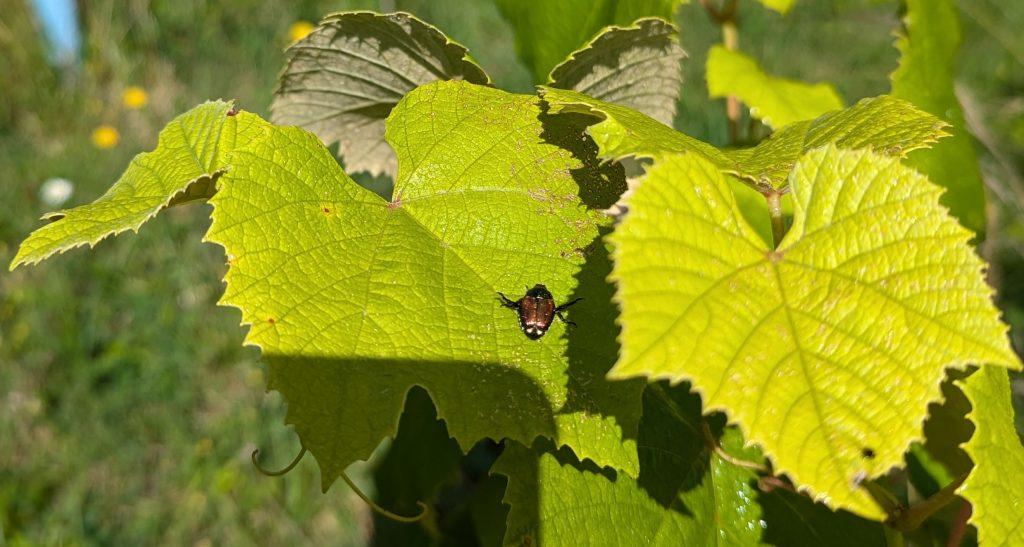
A method we have been employing to reduce other insect pests in the vineyard is the establishment of pollinator plantings. These plantings attract beneficial predators and parasites, including spiders, wasps and mantids. We have been very successful in attracting predators as evidence by the number of times we got stung working in the vineyard blocks! Yellow jackets and paper wasps are the worst. Yellow jackets are ground nesters and stepping on their turf easily incites them to sting. To control these “beneficials”, we are making tank mixes with peppermint terpenes to deter the ill-tempered wasps.
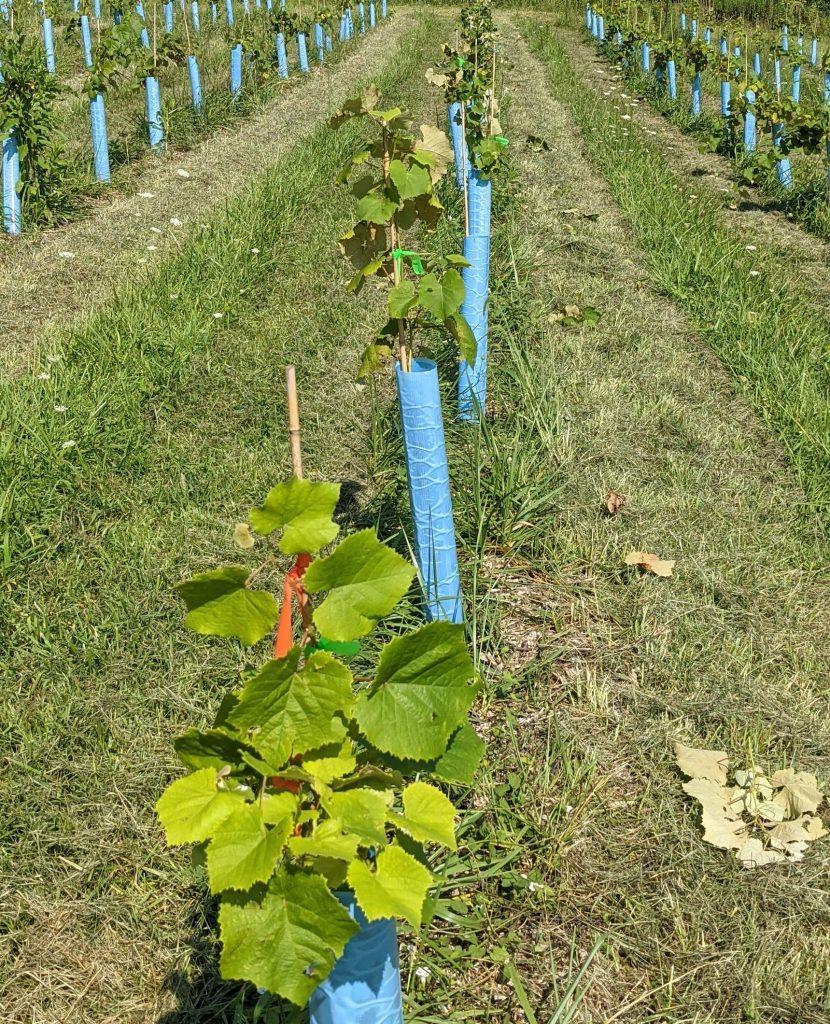
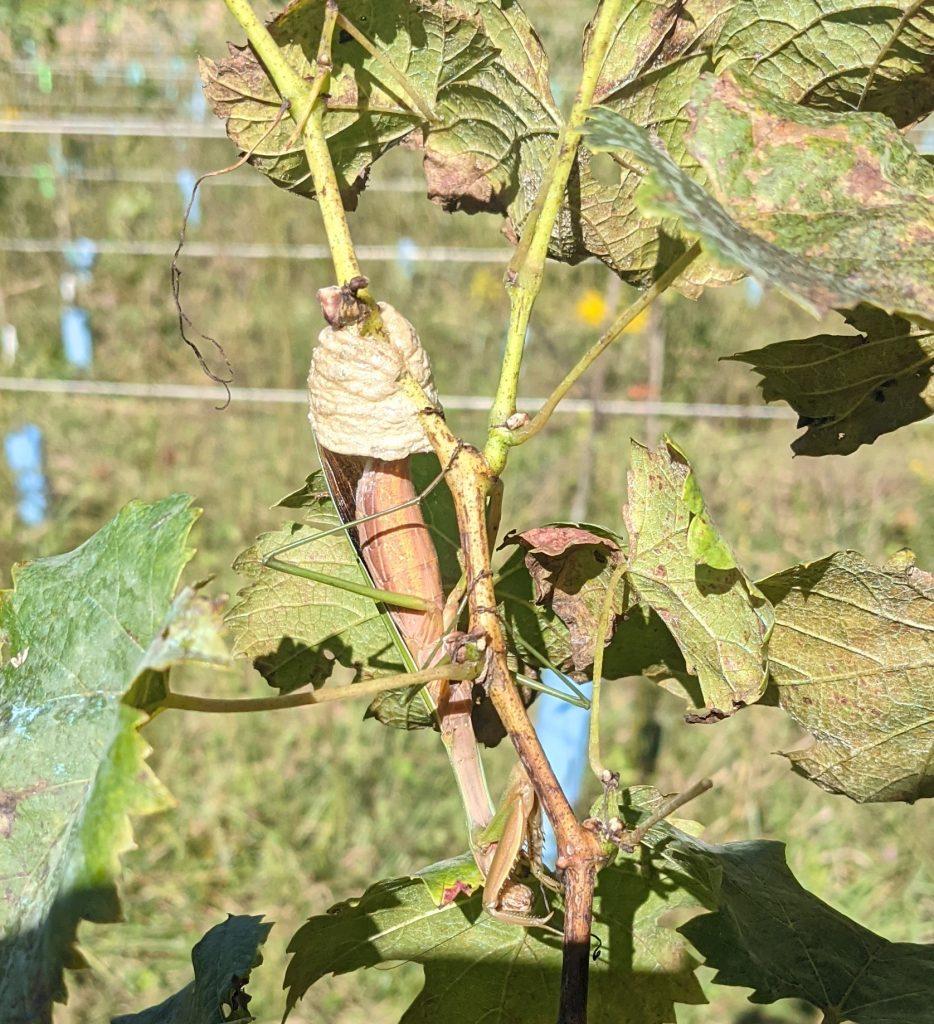
Oh Deer!
Wait, wait…pests come in all sizes, and one of the nuisance pests in the vineyard is deer. When they munch on the foliage of newly planted vines, they are not very endearing! Of course, they feed at dawn and dusk. To prevent deer damage, we have tried a number of tactics with mixed results, including:
- Solar electric fencing
- Plastic deer exclusion netting
- Hanging soap bars
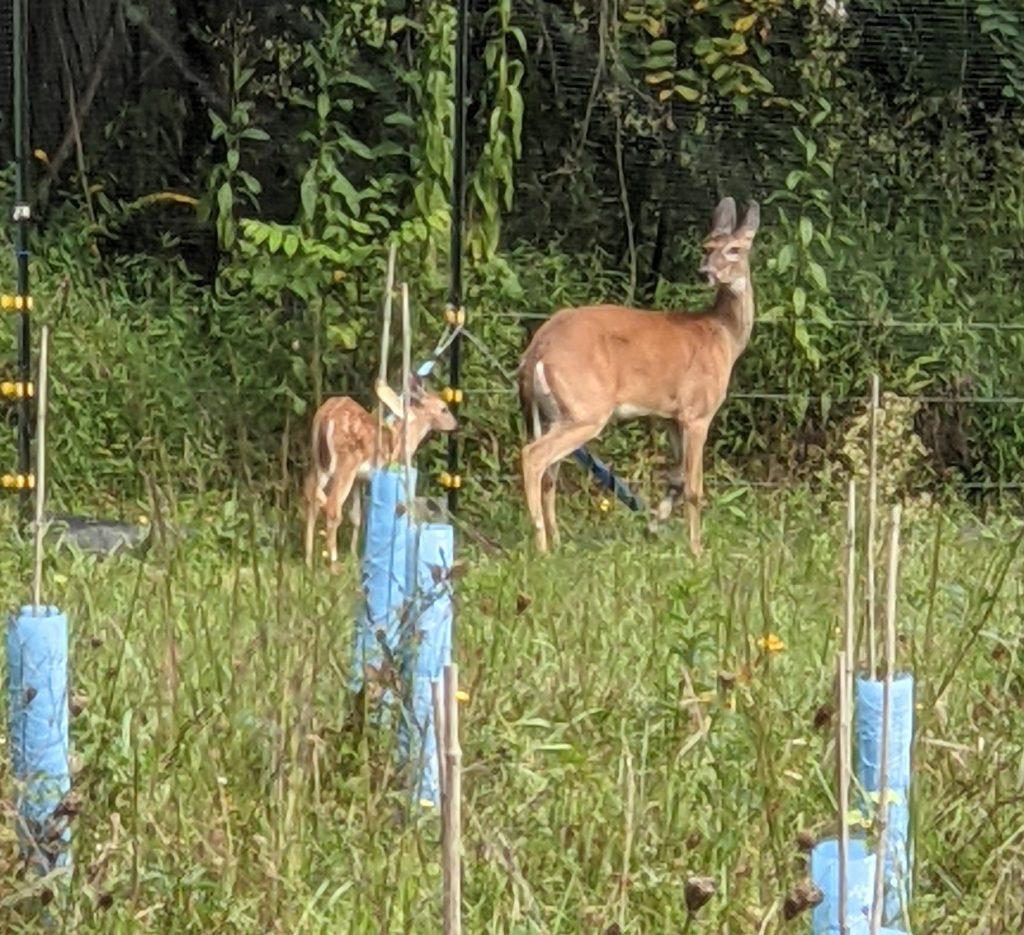
This year, we will apply a deer repellent which supposedly deters deer for up to 6-months. The deer repellent spray developed by the Connecticut Agricultural Experiment Station (CAES) is comprised of lanolin (5 volumes), sodium lauryl sulfate (1 volume) and water (4 volumes). This is diluted to just over 6 gallons of a ready to use (RTU) mix, enough to treat 3 acres. Use D-Limonene to clean the sprayer (CitraSolv, Natures Orange), as the mix is sticky and gloppy.
Is Veraison for the Birds?
Ok, now we made it to the beginning of grape ripening! As grapes ripen, the sugar content increases and the acidity decreases. The grapes beginning coloring up. The physiological change is called veraison. It is also a visual signal for birds to pick off the harvest!
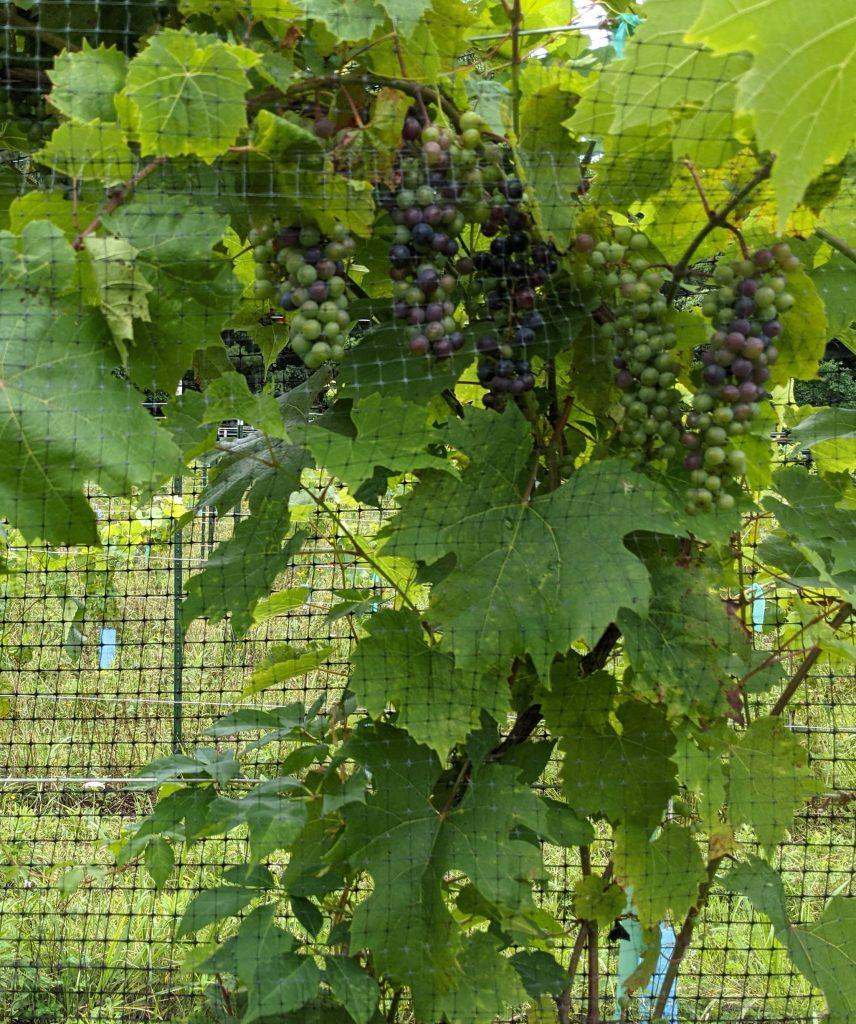
There are several approaches to preventing birds from taking the grape harvest. These include netting the vines, using bird scare devices, and using an inflatable tube man (no, really). Netting can be very effective, but it is also labor intensive. We net strawberries and blueberries, but have not netted the grapes. Rather, we have focused on two approaches to scare birds away. These include the Bird Gard and the inflatable tube man. The Bird Gard is programmed to emit random bird distress and predator calls. It is effective, but not entirely so. The inflatable tube man is functionally an actively moving scare crow. I have found it to be highly effective to deter birds. Using the two in concert can increase the efficiency and range of each.
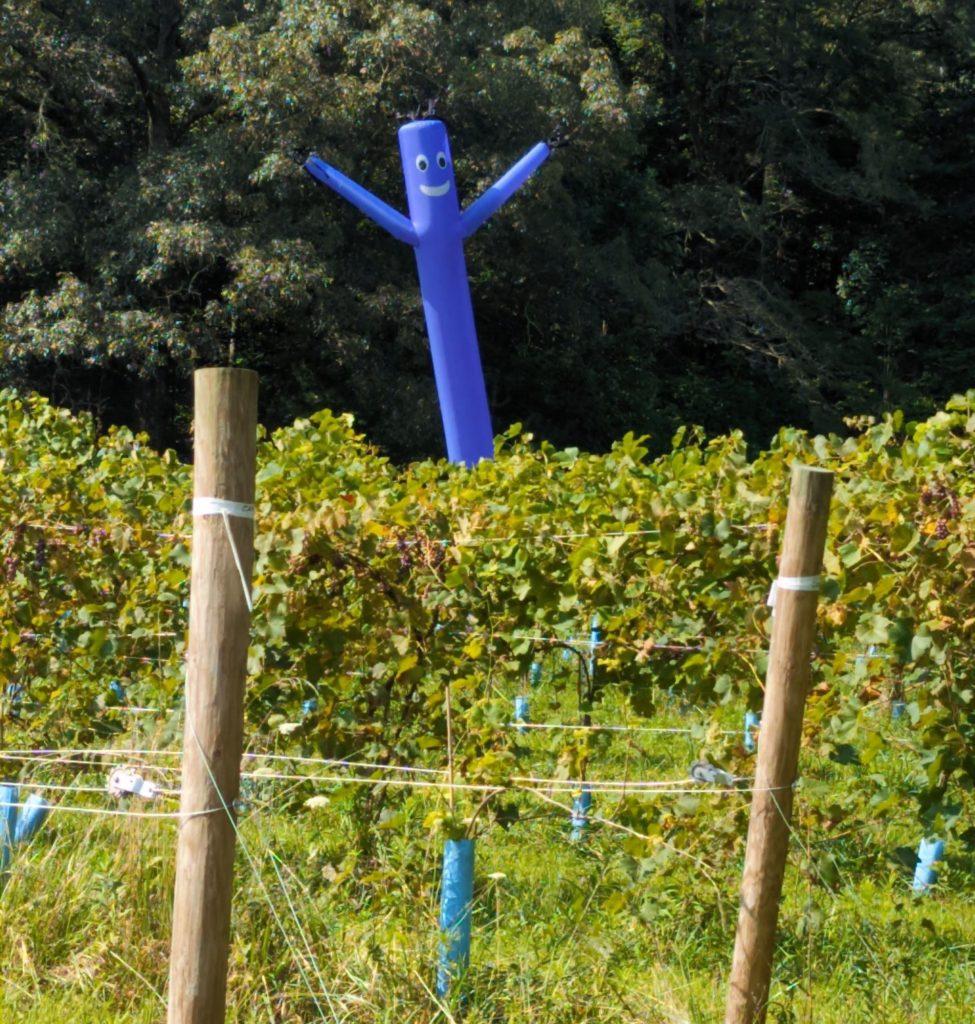
Owls and raptors are natural predators. If you are lucky enough to attract them, they will deter birds and rodents in the vineyard. To attract owls, set up owl boxes (you’ll need two) in winter when they are seeking nesting sites.
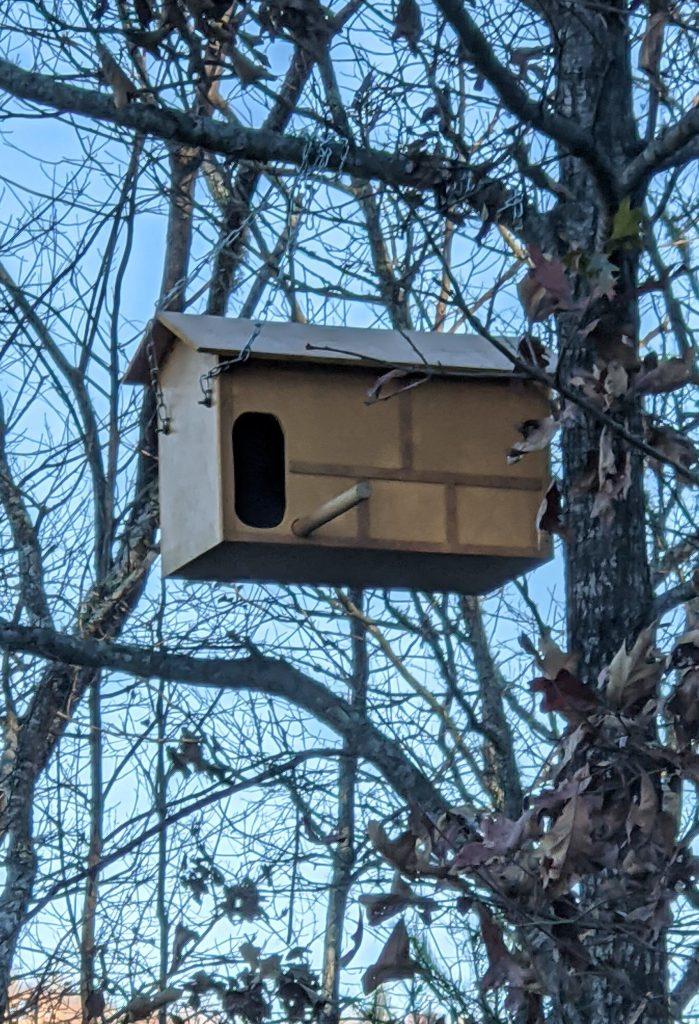
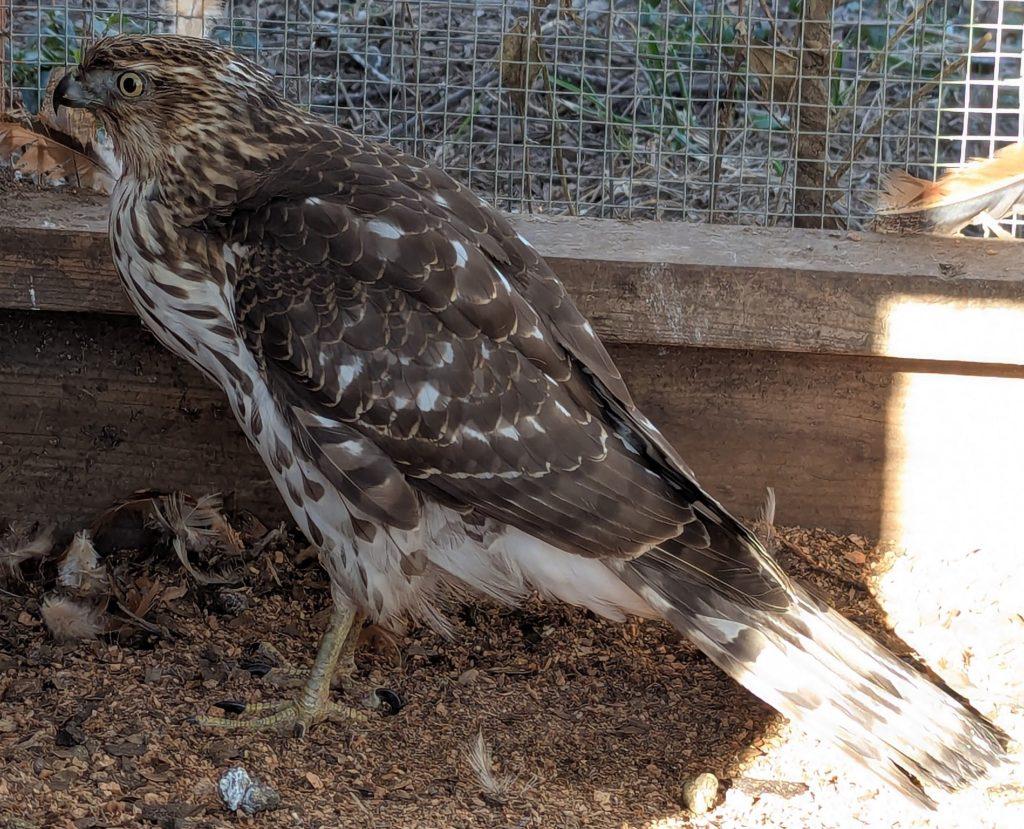
The Harvest
If we are diligent in managing our vineyard with judicious pruning, fertilization, bi-monthly applications of foliar sprays to manage pests and diseases and to reduce abiotic stressors, we will be rewarded with a grape harvest, the entire point of the season long endeavors!
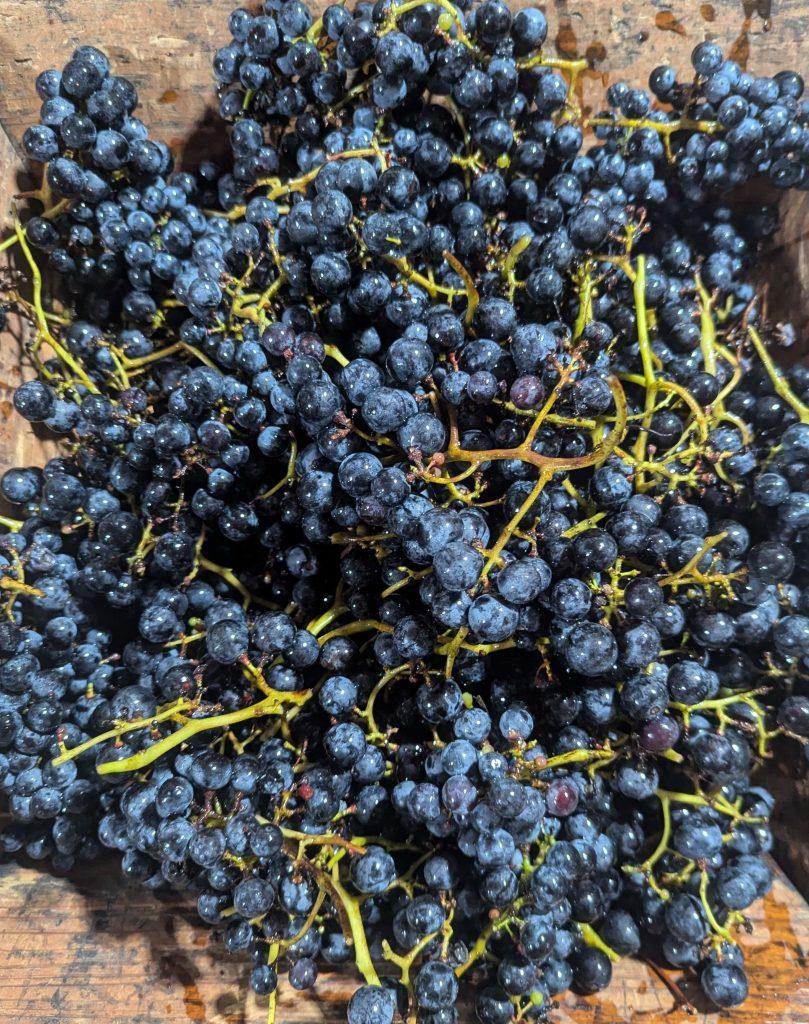

Next time, we’ll move on from the vineyard and onto other aspects of the landscape.
~ Signing off for now, Joe

